1 - Expected post-Chinafy results
Does WP Engine Work in China?
TL;DR WP Engine websites don’t work in China. At least, not like they do elsewhere globally. The average WP Engine website -
- Takes 45.74 seconds to load in China*
- Loads 3.7x slower in China than they do elsewhere
- Fails to deliver an average of 33% of web resources when loading from China, which makes it essentially broken for the China visitor
In this article, we’ll explain the technical reasons behind poor China web performance for WP Engine sites and various solutions.
(5-minute read)
*Defined by Fully Loaded.
What is WP Engine?
WP Engine is a WordPress-specific web host, offering managed plans that are fully optimised for the platform. With multiple enterprise-grade plans, WP Engine offers support for WordPress, its themes, and its plugins.

Source: WP Engine
Who uses WP Engine?
With over 1.5 million users, WP Engine is used globally as a trusted WordPress website host by global companies like National Geographic, Soundcloud, AMD, Under Armour, Thomson Reuters, and more.

Source: WP Engine
How does WP Engine load in China?
WP Engine performs up to its high standards for users accessing its websites globally, that is...
with the exception of users in China.
Taking a randomised sample of six WP Engine-hosted websites and running how they load in China vs. California, U.S., we arrived at these results:
The average WP Engine-hosted website
takes 45.74 seconds to load in China
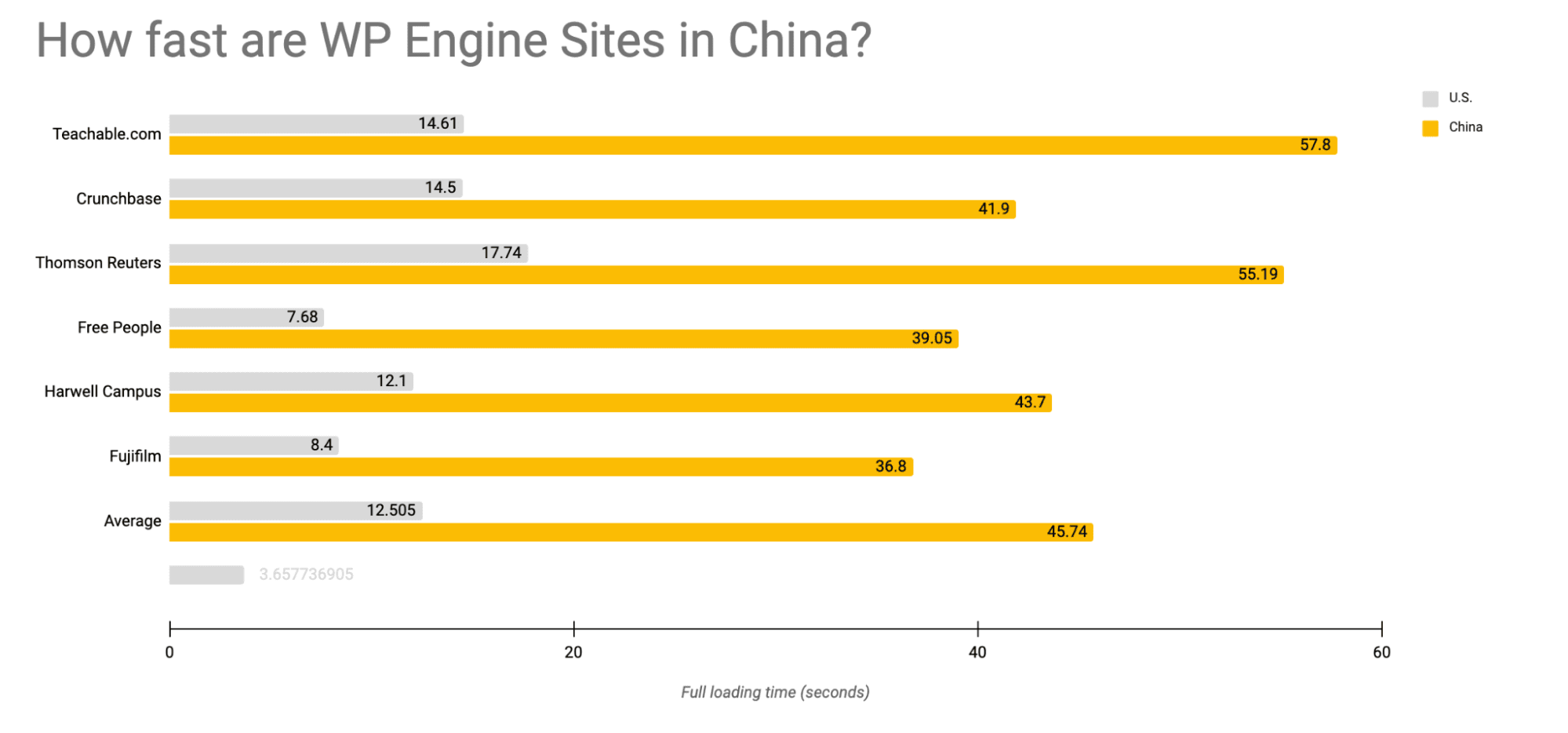
The average WP Engine website is missing 33.25% of resources in China.

Source: WP Engine
Why don’t WP Engine websites work well in China?
It’s not just WP Engine that underperforms in China…
The truth is that almost all websites and their related content management systems struggle in China, regardless of how they’re built and/or hosted (i.e. Drupal, Pantheon, WebFlow, Squarespace, and more).
Most websites face a mix of infrastructure and code-based incompatibility issues in China that contribute to poor web performance.
To break these issues down further, we can take a look at both:
i) Infrastructural issues
China’s unique internet ecosystem creates challenges for websites that are built without a China-friendly mindset at the onset.
While the infrastructure (e.g. the hosting server or cloud provider) may only marginally impact a website’s performance in markets outside of China, these variables correlate with the failure to deliver a functional experience for visitors in China.
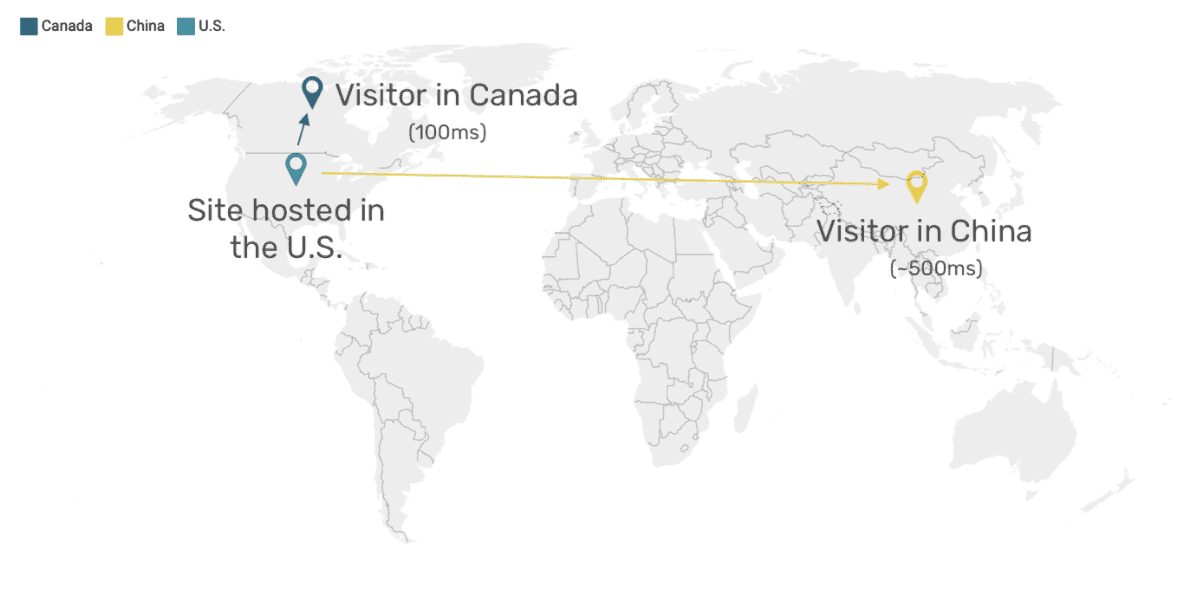
See a graphic illustration of how a U.S.-hosted website would load for a China visitor vs another in Canada
WP Engine, and subsequently WordPress, is not immune from these issues.
For the most part, infrastructural issues boil down to a website’s hosting server’s location and its choice of Content Delivery Network (CDN).
What is a CDN and how is it used in China?
Content Delivery Networks (CDNs) are a distributed series of servers that store cacheable content closer to visitors accessing the website. They serve a number of functions, primarily to accelerate the "delivery of content".
Typically, companies tend to favour hosting their site close to their IT headquarters or primary user base. For most WP Engine users, that would be in one of the 13 server locations they host globally, none of which are optimised or targeted for access by users in China.
This practice means that China-based visitors face increased latency, reduced throughput and therefore a slower loading website.
Traditionally, developers would normally address those issues by bolting on a CDN or rehosting microsites closer to various regional markets. For WP Engine users and developers, that would be simply turning on its built-in Cloudflare CDN.
While this would work with accelerating your website across most of the world, this simply won’t work for China.
Incorporating on-shore CDNs could be a partial solution for improving website speed. However, WP Engine’s CDN does not natively own its own CDN or points-of-presence (i.e. POPs) in China. Instead, it partners with Baidu and JD Cloud and leverages their onshore PoPs.
Prerequisites to use Cloudflare China CDN include an ICP Filing or License, a local hosting agreement with a Chinese-based hosting provider, a PSB, and a legal entity in China/China-owned business or a China-based representation office. Companies remain the exclusive owner of customer data but data must be stored domestically in China.
Cloudflare China CDN is a separate service that starts at US$4-5K a month as of 2023.
ii) Code-based incompatibility & 3rd-party resources
Certain third-party platforms - like Facebook or YouTube - are inaccessible in China. This applies both on the domain level (e.g. links to those platforms) and on the supporting resources (e.g. embeds) on any websites.
Because these third-party resources are inaccessible from China, this means that China visitors will not be able to access or view this content and WP Engine websites are no exception.
When a visitor loads a WP Engine website built with these inaccessible or slow resources, either of two things will happen:
i) They might see a partial website loaded at unacceptably slow speeds, if not timing out altogether, or
ii) They might see nothing at all
To illustrate, take a look at the resource waterfall chart for visitors attempting to load past the “connect.facebook.com” resource below -
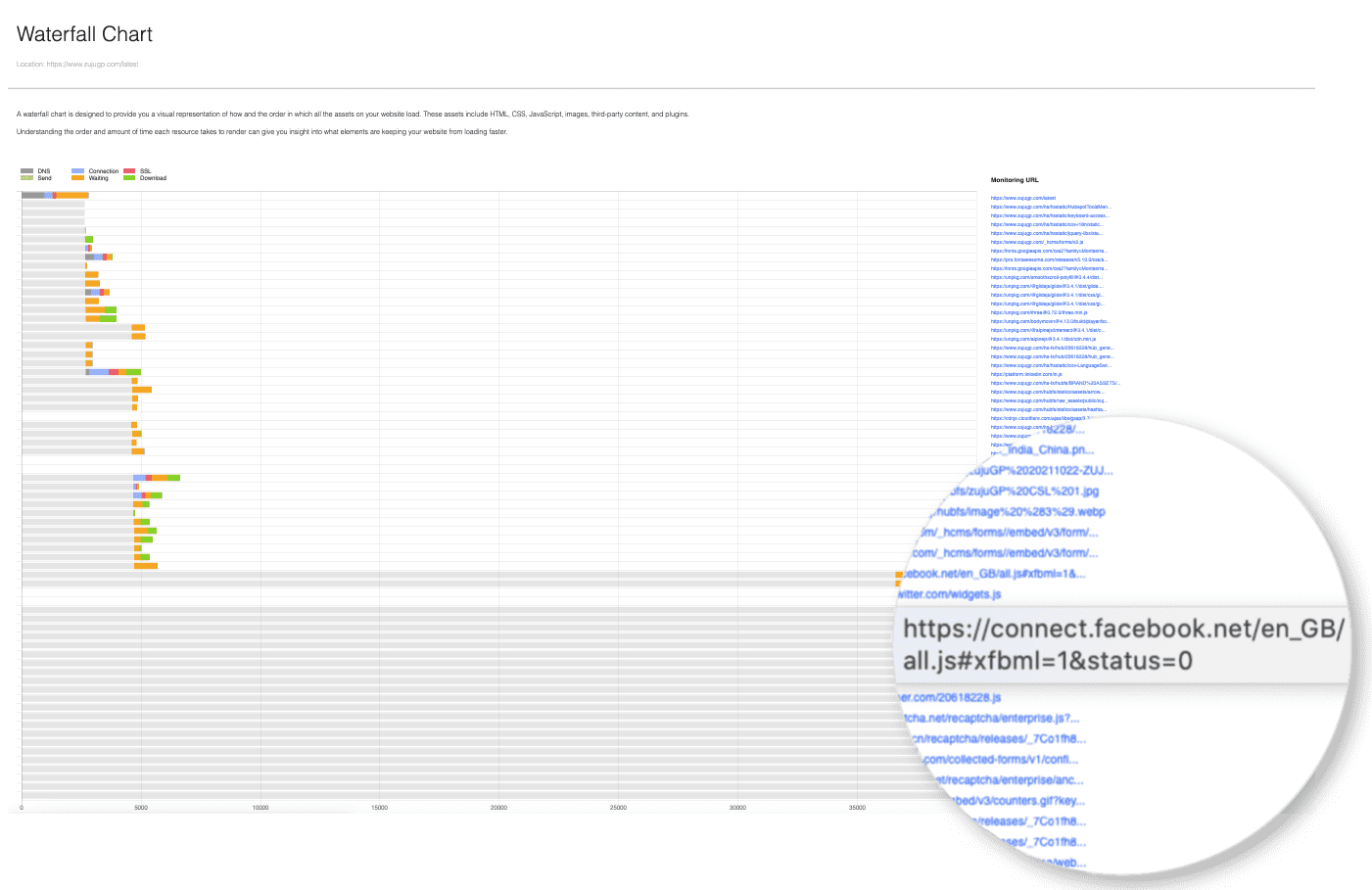
As you can see, resources after Facebook are only loaded at 35s+.
How to make WP Engine work in China
The good news? WP Engine websites can be optimised to load fast and fully in China.
Let’s take a look at some approaches below.
Option 1: Host your WP Engine site(s) in China
Regional hosting is usually a one-step process. Sounds easy enough.
However, the case for China is more complex (more below).
To host sites in China, you’ll need to -
First, become a licensed web content provider.
Build and launch a separate, China-specific, new “localised” site. This adds an estimate of 3 to 4 months of development to your timeline.
Manage a list of blocked resources and find China-friendly alternatives and ensure it works on an ongoing basis.
This fully onshore approach often costs between US$42K to $100K upfront. You will also need to account for the i) recurring costs of keeping the onshore site running and ii) the operational overhead and manual work involved in regularly synchronising the China site with its global counterpart.
This is when performance issues turn into additional headcounts and regulatory approvals, not to mention other onshore resources used in the process.
Already have an ICP? Want the onshore approach? Let us help make your next steps easier.
Option 2: Use a China CDN (Partial Solution)
A China CDN delivers some forms of acceleration in China, but it’s not the magic bullet to all performance issues.
While CDNs can accelerate web resources on the primary domain, no CDNs - including China CDNs - resolve the blocked components or dozens of other incompatible Third-Party Web Resources that fully comprise a website. For example, YouTube-embedded videos and Facebook trackers on WP Engine websites will still be inaccessible.
In technical terms, CDNs do not optimise the application layer. CDN acceleration also only applies to resources in the primary domain, which limits the ability to address the full picture of web incompatibility in China.
Chinafy vs CDN - which one do you need?
Option 3: Chinafy
Chinafy almost instantly bolts onto WP Engine websites to generate its China-friendly version without rehosting or rebuilding the websites from scratch.
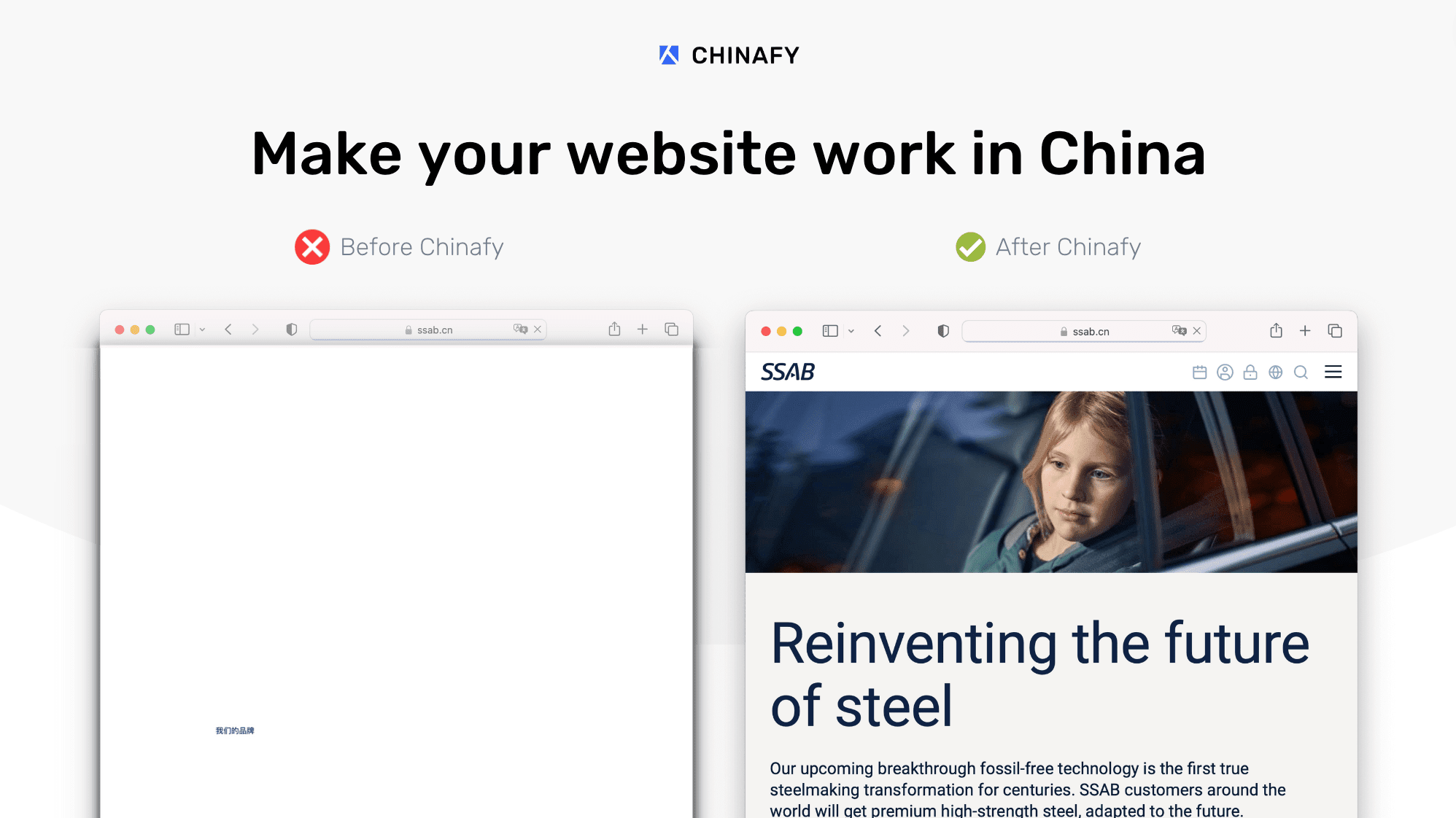
Chinafy achieves this China-friendly optimisation by -
i) Intelligently scanning websites’ application layers to replace, remove, or optimise a website’s third-party resources.
This is Chinafy’s specialty, and why we’re official partners to leading tech and cloud providers like AWS and Alibaba Cloud.
ii) Bolting on best-in-class CDNs for accelerated delivery and more.
Don’t just take our word for it — take theirs.
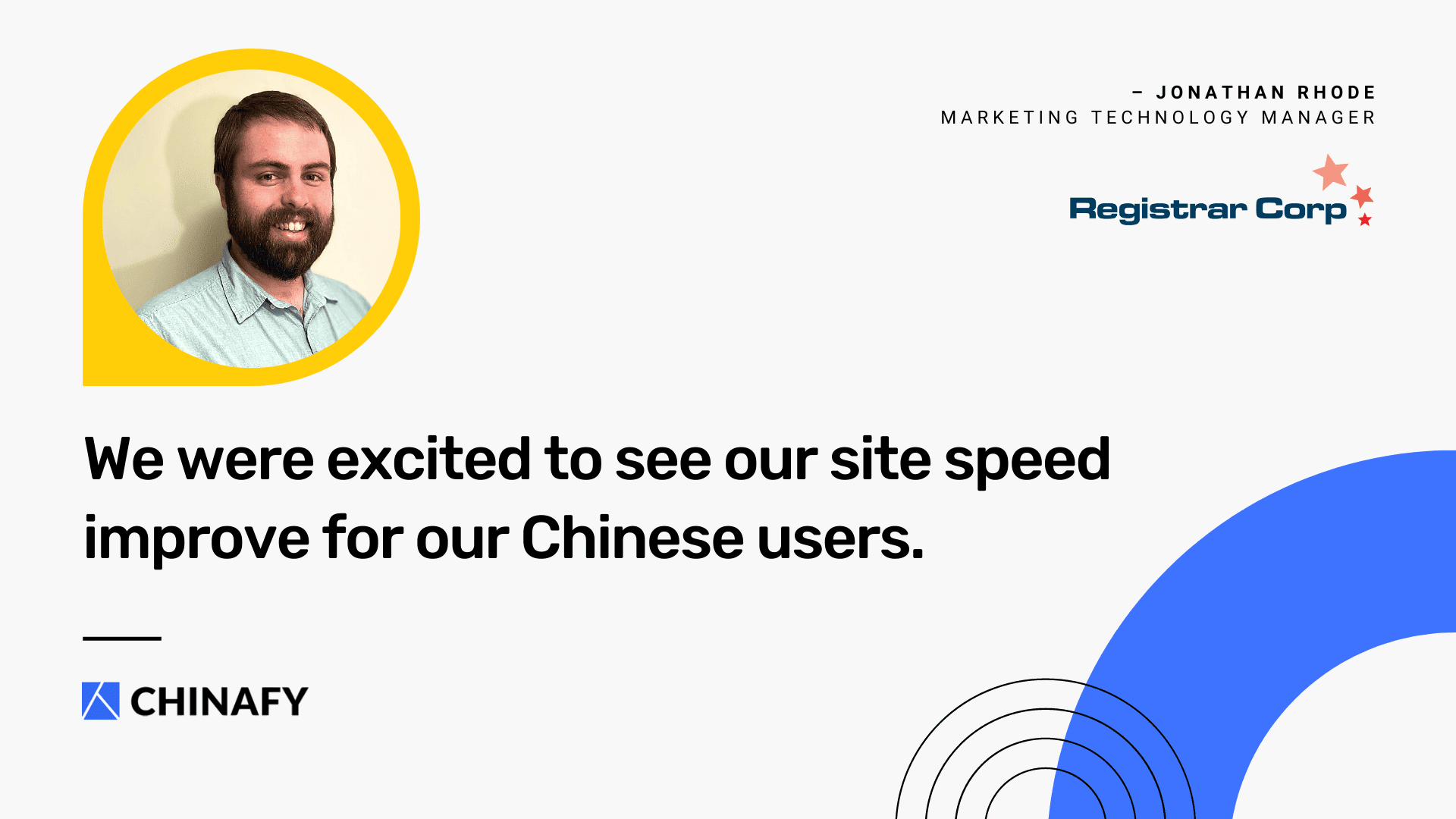
Registrar Corp uses WP Engine and works with Chinafy to make their website accessible in China. The outcome is an optimised, fully-managed version of WP Engine websites that’s 6-8x faster in China.
The cherry on top? The Chinafy version of the website hits the ground running in ~1.5 to 2 weeks.
Get in touch with Chinafy to optimise your WP Engine website in China


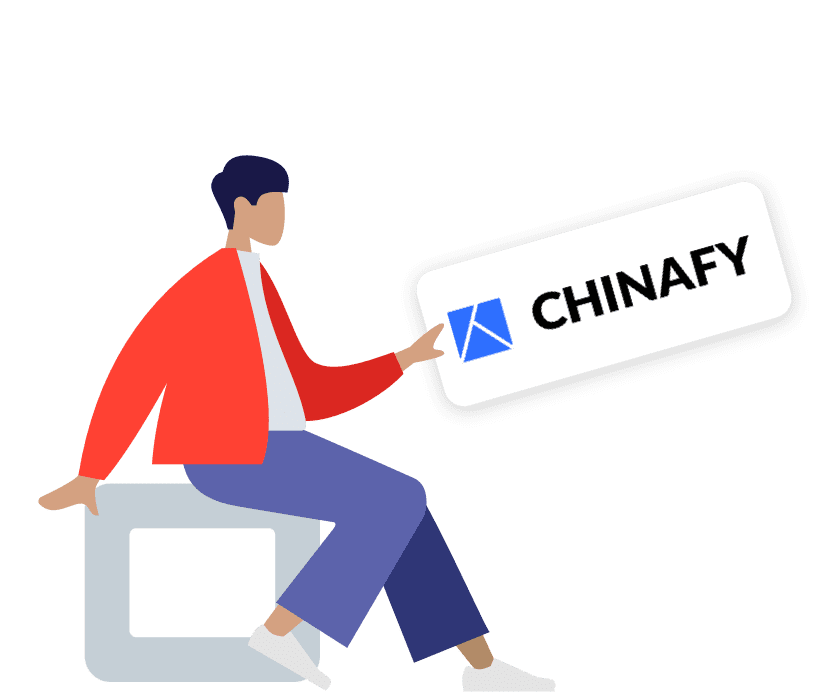
1 - Expected post-Chinafy results






























